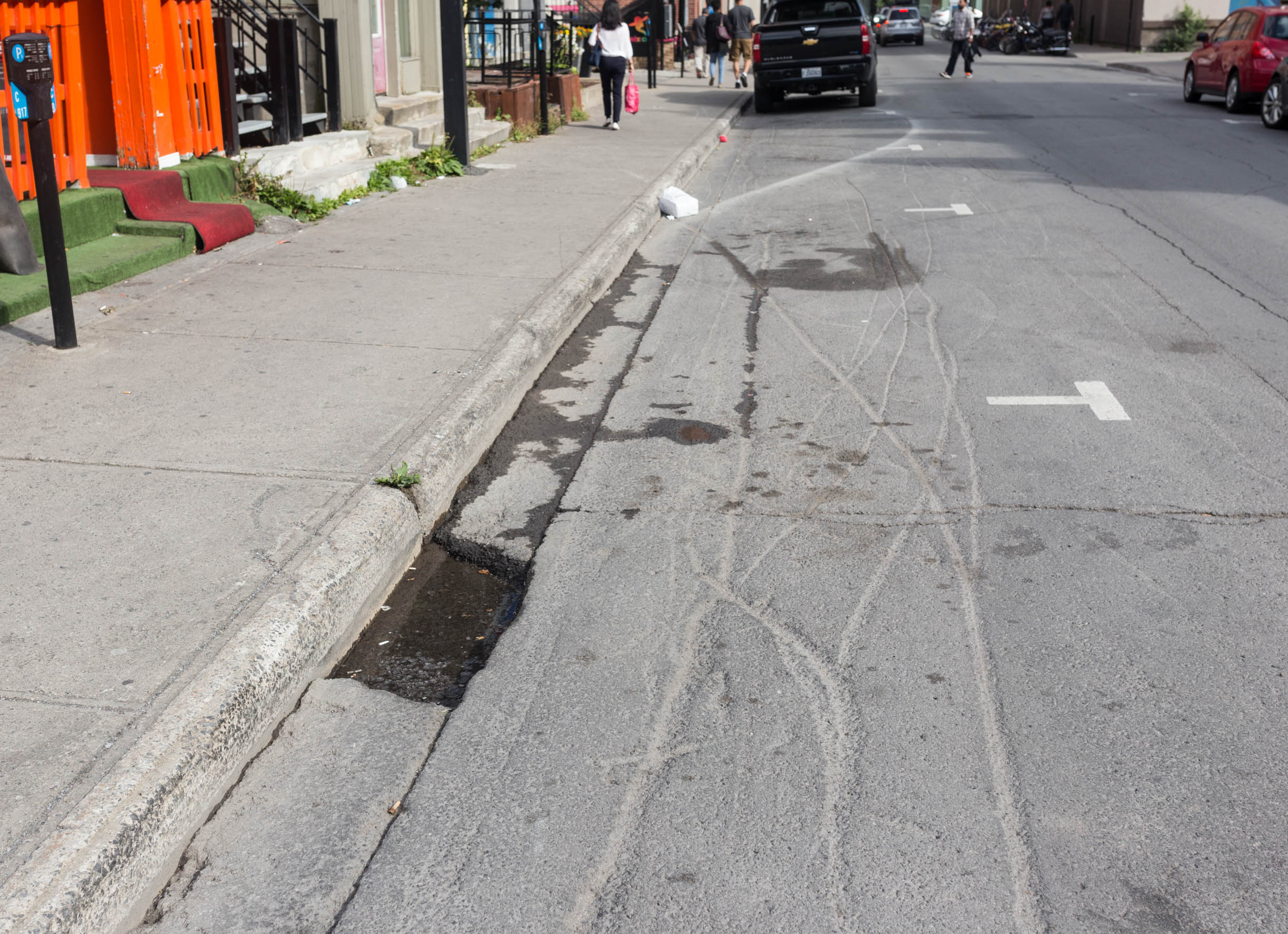New study outlines system for predicting pavement degradation
A Concordia professor and two students have designed a new system to evaluate the condition of pavement in the hopes of preventing its deterioration. Tarek Zayed, a professor of civil and environmental engineering, and graduate students Soliman Abu-Samra and Wael Tabra published the findings in their report, “Pavement Condition Rating Using Multiattribute Utility Theory,” in the Journal of Transportation Engineering, Part B: Pavements.
The authors studied data on road conditions from the Nebraska Department of Roads, supplemented by a survey of experts from across the world, to determine the most serious kinds of pavement defect. They identified transverse cracking—cracking which runs parallel to the road—as the most serious form of deterioration. Other forms included rutting—when the pavement is deformed by tires in high heat—and road roughness. The researchers then considered each of these factors when it came to their impact on pavement quality.
However, Abu-Samra said simply examining these factors is not enough.
“[Existing systems] just [observe] the defects and assess the condition accordingly,” he said. “But our system takes into account the triggers of these defects. So, basically, it takes into account the climate condition, the average daily traffic, the average daily temperature—all of these factors do contribute to the deterioration of the asphalt.”
The model was shown to predict pavement deterioration with 94 per cent accuracy.
Abu-Samra said roads across the continent are in poor condition because current municipal strategies are reactive rather than preventative. More than half of roads in Canada are in subpar condition, according to the 2016 Canadian Infrastructure Report Card.
“We are trying to move from a reactive approach to a preventative approach,” Abu-Samra said. “Reaction is not management.”
According to the 2016 Canadian Infrastructure Report, “spending $1 on prevention” when roads are in peak condition “eliminates or delays spending $6 to $10 on rehabilitation or reconstruction” when they are in poor condition later on.
Citing the Canadian Infrastructure Report, Zayed, Abu-Samra and Tabra’s paper said the cost to fix all Canadian roads in fair or poor condition is estimated at $91.1 billion in total, or $7,325 per household.
Abu-Samra was not aware of any research comparing Montreal roads to those of other North American cities. However, according to the CBC, the city of Montreal evaluated more than half of its roads as being “bad” or “very bad” in 2015. The city determined this by looking at Pavement Condition Index (PCI) scores from that year. The PCI is an index used in many North American cities to evaluate stretches of pavement on a 100-point scale, with 100 being the best and one being the worst.
Abu-Samra has also published three books on infrastructure maintenance, has delivered a TED Talk on the subject and currently serves as the vice-president of Concordia’s chapter of the North American Society for Trenchless Technology (NASTT). He said he hopes the model designed by his team will be adopted across North America, which currently lacks a standard pavement evaluation system.
The published study can be downloaded here.
Photo by Kirubel Mehari
